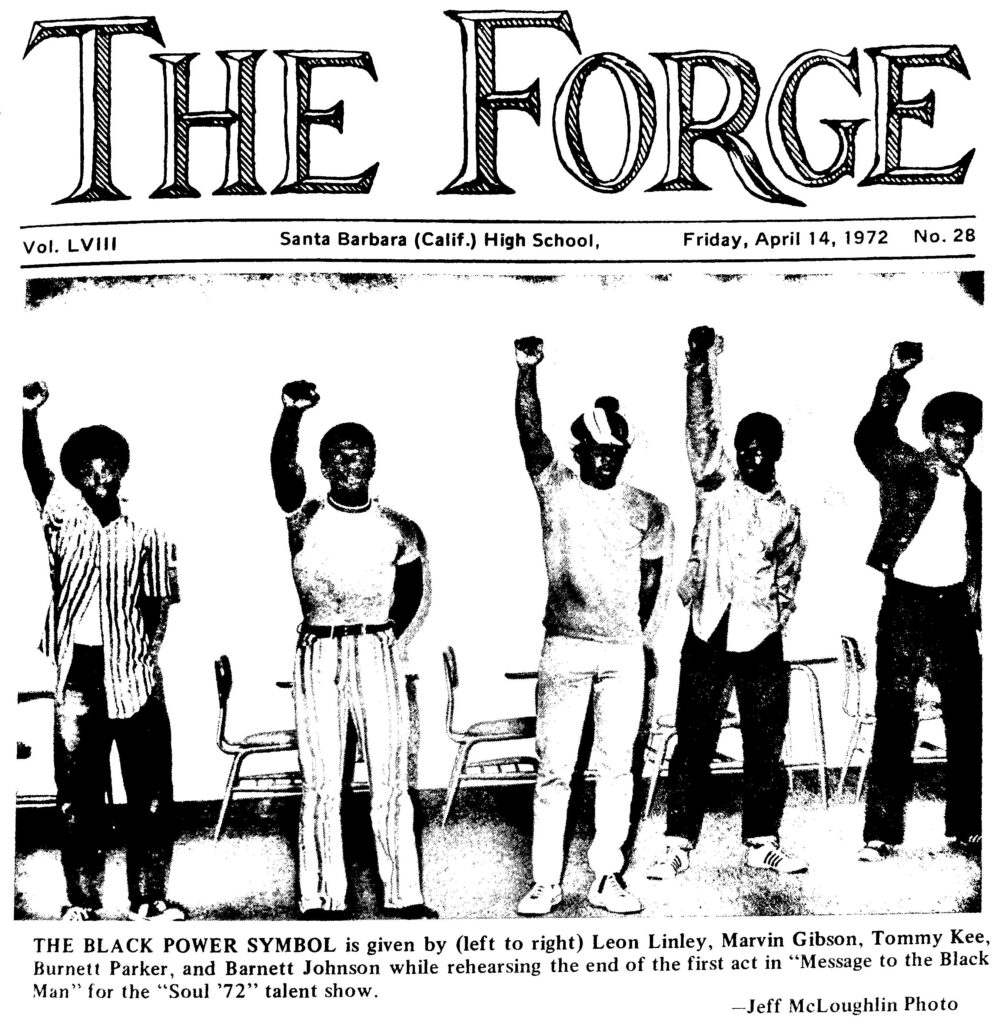
To celebrate Black History Month, a group of editors took a look back at The Forge’s coverage of the Civil Rights Movement and other aspects of Black life at Santa Barbara in the past.
Despite the strides toward racial progress — like the landmark Brown v. Board of Education case in 1954 that desegregated schools across America or the 1964 Civil Rights Act that legally ended segregation — there was no mention of any racial progress made in The Forge. Even the tragic racially motivated killings and hate crimes that garnered national attention during the 50s and 60s somehow “didn’t make the cut” to be brought up in The Forge.
Limited to vague ideas of equality and racial cooperation with little mention of the real events, The Forge’s past coverage of racism and African American struggles could be described as “passive” if not completely inactive. When mentioned, sandwiched somewhere between school dance announcements and football scores, the tone veered between neutral to outright offensive.
Most notable was Santa Barbara High’s “slave day” competition that “pits the boys against the girls” in an effort to increase basketball game attendance. Whichever gender had higher attendance at games would be the “masters” to the other gender for a day. Though not race related, this tradition exemplifies the extreme insensitiveness and unawareness that was deemed “acceptable” at the time. By using the idea of slavery in a cheery, school-pridey way, it dimished the past and current struggles of African Americans. In 1963, The Forge published an article announcing that slave day would cease indefinitley.
While The Forge very often failed to mention the timely civil rights topics of the era, they did regularly feature Black students in articles that praised their academic, cultural, and athletic achievements. One of The Forge’s 1915 articles promoted “The Tuskegee Singers” that would be performing African American Folk songs at SBHS with proceeds of ticket sales going to the Tuskegee Normal and Industrial Institute “of which Booker T. Washington was the president of.”
In 1958, Margaret Murphy, a Black woman, became The Forge’s editor-in-chief.
In 1963, three Black students from Birmingham, Alabama transferred to SBHS and were subsequently featured in an Article titled “Like Living in Another World, Birmingham Students Say of SB.” In the article, one of the students said “people here are so different; they are friendly, seem interested in us, ask all kinds of questions, without being afraid that talking to us will degrade them.’”
In 1965, The Forge published an article about a successful black Alumnus, Edker Matthews, who contributed greatly to SBHS and his plans to become a teacher after graduating from college.
Almost exactly 50 years ago today, an article titled “National Black Week Is Observed” was published in the February 18th, 1972 edition of The Forge. The article focused on the status and growing importance of African American education in America. Later in 1972, The Forge featured a front cover page photo of Black SBHS students showing a Black Power sign during a rehearsal for their talent show performance.
While The Forge wasn’t exactly prolific in addressing civil rights issues at the time, they certainly treated Black students and topics with a more open and accepting tone than that of other parts of the country.
Similarly, Santa Barbara School District has had some growth in their approach to promoting racial justice. this year. The Santa Barbara Unified School District’s Board of Trustees passed Resolution No. 2021-22-17, which acts as a formal recognition of Black History Month 2022. The resolution states that “the Santa Barbara School District Board of Education does hereby adopt this resolution to encourage Black History Month as an opportunity to bridge the past to a better and brighter future.”
In addition, the resolution further affirmed the School District’s commitment to anti-racism and equity. The School District’s implementation of an Ethnic Studies curriculum requirement and formal recognition of Black History Month shows progress toward a more equal educational environment. While looking back at our lacking coverage on racial justice, it did not escape us that we still have room to grow as a paper committed to calling out inequity and not perpetuating it. For Black History Month 2022 and well into the future, we plan to continue coverage of Black legacies, as well as maintaining our commitment to represent the student body, as a paper diverse in both stories and ideas.
[Image Credit The Forge Archives]





Be First to Comment